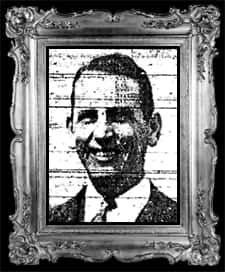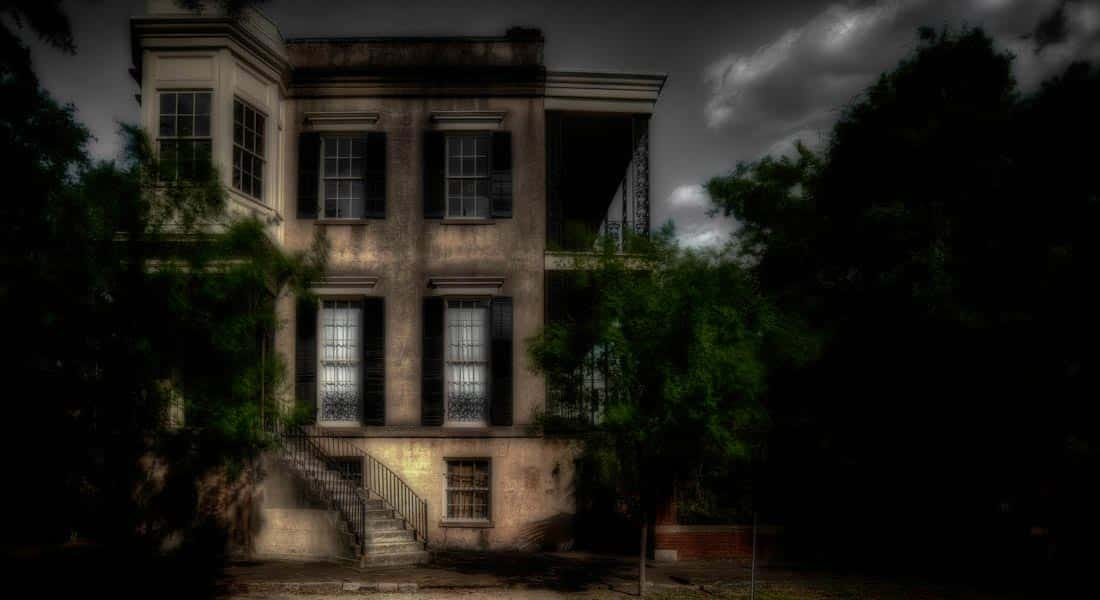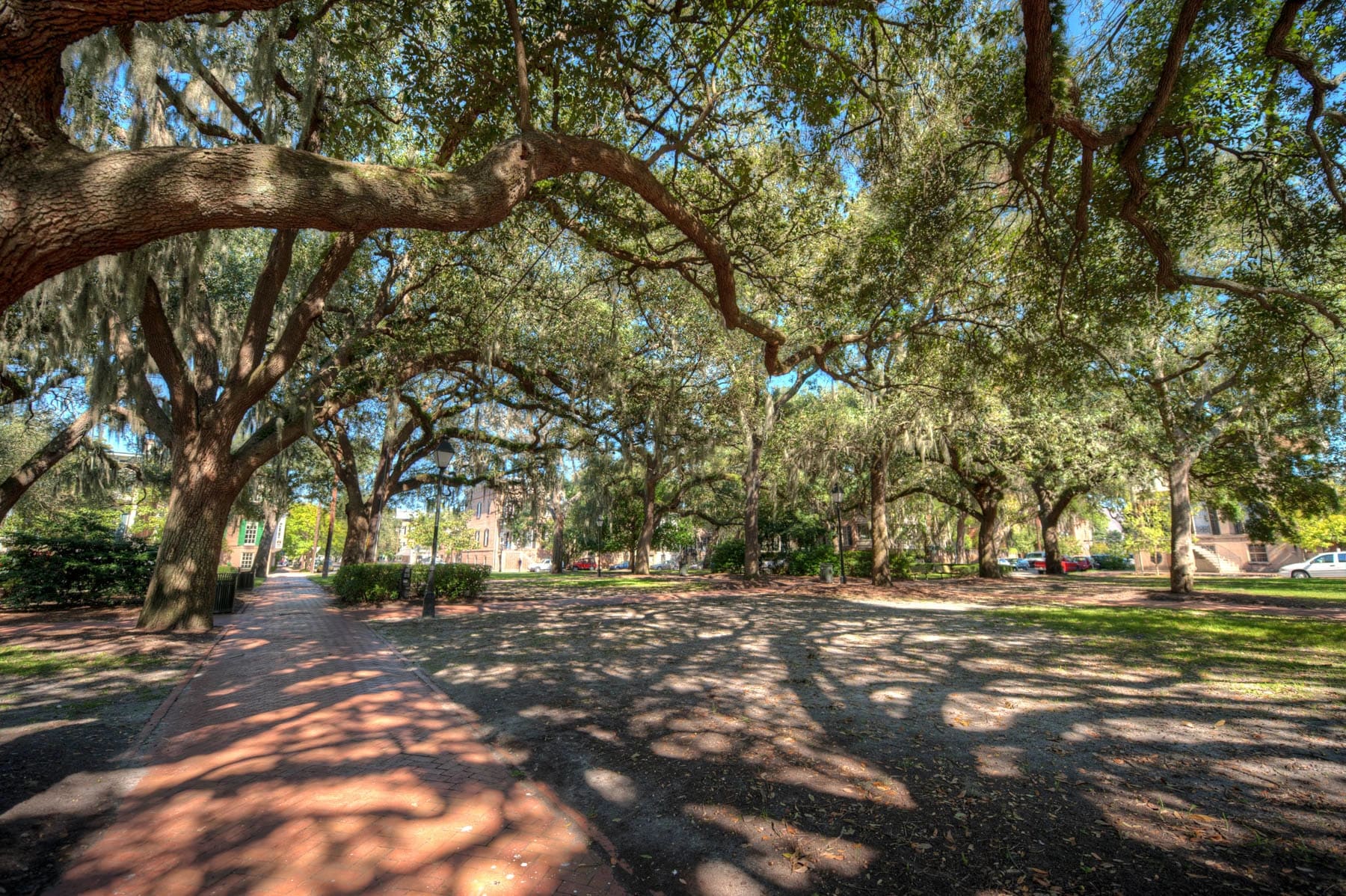A Square Where Innocence Lingers
Savannah has a long established reputation for being one of the most haunted cities in America, and as any of its citizens can contest to, Calhoun Square (also known as Massie Square) is bustling with all sorts of paranormal activity. If you're looking to do some supernatural investigating, Calhoun Square in Savannah, Georgia, is just the place for you, as there are many stories that revolve around the beleaguer Calhoun Square. From murders and suicides to disappearances, this haunted square has been scarred and left with a lasting presence, an all-encompassing dark and somber energy. You can certainly feel the pain in the air, and can almost hear the screams of the damned when the wind blows past your ear. The spirit of a Confederate soldier? The soul of a slave who has been trapped in the square for two hundred years? Curiosity just might compel you to find out. One story from several years back, in the early 2000s, involves a local gas company. They were demolishing the sidewalk that resides in front of the Massie Heritage Center. It didn't take long before the workers began digging up bones—bones of the human variety—and within minutes the construction site had turned into a crime scene. Forensic experts were called in and it was determined that the remains were of African-American slaves, who had been buried beneath Calhoun Square for 200 years. So, when you do visit the square, be mindful that you are walking on the largest slave graveyard in Savannah.
Fast Facts
- •Named for John C. Calhoun in 1851
- •Home to the Massie Heritage Center (1856)
- •Site of multiple yellow fever epidemics
- •Children's spirits most active during school hours
- •Victorian mansions surround the square
The History of Calhoun Square
Calhoun Square, situated along Abercorn Street, was one of the final three squares to be created in Savannah during the year 1851. In a city famous for its squares (and, no, I don't mean the L7 weenies in seersucker suits), Calhoun Square is unique as it is the only square in the City of Savannah with all of its original buildings still intact. Calhoun Square was named after John C. Calhoun, "the Great Orator of the South." Calhoun was a South Carolina statesman who served as Vice President for both John Quincy Adams and Andrew Jackson during their presidential runs. Calhoun was selected in 1957 by a Senate committee as one of the five greatest United States senators in history, but he remains a controversial figure in our country's history for his pro-slavery stance.
In the wake of the 2015 racially-motivated shooting at the Emanuel African Methodist Episcopal Church in Charleston, South Carolina, a movement emerged to remove monuments dedicated to pro-slavery and Confederate figures. That year, the monument to Calhoun in Charleston was "vandalized" and the word "racist" was spray-painted onto the monument in red. Also, in 2015, a group of Yale students started a petition to rename Calhoun College (one of Yale's residential colleges), but despite the alumni's support of the students' protest, Yale President Peter Salovey has stated that Calhoun's name will remain.
The Savannah square's namesake only adds to its ominous history, a history that has been written in blood. Upon their death, slaves were brought to these unhallowed grounds and disposed of without coffins, inhumanly discarded like yesterday's trash. It's been estimated that around a thousand slaves "rest" beneath Calhoun Square, and the souls of these slaves are known to still haunt the square to this day. Perhaps they'll never truly be at "rest," at peace, for as long as the grounds to which they're bounded bare the name of the man who advocated for their captivity.
The Historical Sites of Calhoun Square
Much can be said about Calhoun (generally not positive), but most who visit this Savannah square, do so to see the haunted historical buildings and the Greek Revival Style residential homes that surround this area from corner to corner. Here are two of the most prominent buildings to sit on the square:
The Massie School
In the year of 1865, the Massie School first opened its doors and became the first public school in the City of Savannah. The Massie School was designed by architect John Morris and named for Peter Massie, who bequeathed the 5,000 dollars necessary to build the school "for the education of the poor children of Savannah."
The school closed in 1974, but the following year, it began operating as a museum and resource center, known as The Massie Heritage Center. Despite its shift in the educational sphere, lessons are still taught. If you enter the center, you'll step into a nineteenth century classroom and gain an appreciation for early childhood education. Also, you'll learn about Savannah's history from the European settlements to the lives of the Creek and Yamacraw people, who lived in the area long before the arrival of the Europeans. The center also has exhibits that include collections of period clothing and photographs, as well as state/local history and information on historic urban planning/preservation.
Wesley Monumental United Methodist Church
Savannah's first Methodist Church, Wesley Chapel, was established in 1807 and dedicated to Charles and John Wesley. John founded the Methodist denomination, and his brother Charles wrote the words to countless Christian hymns including the well known "Hark! The Herald Angels Sing." Wesley Chapel closed its doors in 1862 due to the success of nearby Trinity Church, but was resurrected in April of 1868.
In the year of 1874, plans were put into motion for the creation of a new building for the church on Calhoun Square. The plans for the new Wesley Monumental United Methodist Church were designed by architects Dixon and Carson. The ground was broke on June 30th of 1875, but the process proved to be quite the undertaking. Contributing factors to the church's slow development were financial woes and the yellow fever epidemic. It was fifteen years before the new church finally reached completion.
The Ghosts of Calhoun Square
The Son of a Federal Judge
 Wesley Epsy of Haunted Savannah
Wesley Epsy of Haunted Savannah
One death to occur at Calhoun Square was the son of a federal judge (no preacher man!). This son was Wesley Espy, and the official story (the cover up reported in the newspapers, in particular), was that he fell to his death from a tall porch at the Epsy family home, which was at the corner of Abercorn and East Wayne. But, the legend tells a different story: According to rumors around the town, Wesley's father, Carl (the judge), was associated with bootleggers (during the prohibition era, of course), and was known for his violently bad temper. He reportedly ruled his home with an "iron fist," and was rumored to have even committed murder in the past. But, because he was a mightily feared judge, he was never charged or even investigated.
(Politics: they never are un-corrupted, are they?)
Wesley was the opposite of his father. He was a deacon at the Wesley Monumental United Methodist Church (which he was named after). Wesley became quite close with a girl who attended the church, and the two eventually began to date. The problem with this was that the girl was already spoken for—in a twist of fate, the girl was the girlfriend to one of the bootleggers tied to the judge. The judge begged his son to stop seeing the girl, as this bootlegger was even more abhorrent than the judge himself, but Wesley refused, he stood up to his father for the first time and he did so because he was in love with the girl.
Then one horrific morning, Wesley was found hanging from the porch of his family's home, his testicles cut off and tucked into his top lapel pocket. Retaliation, by the bootlegger.
In the early morning hours, Wesley's ghost has been known to appear on the porch, arriving home late from a night out with his beloved girlfriend.
Debunking the Ghost of 432 Abercorn Street
People often ask about the house at 432 Abercorn Street, and the controversial rumors of whether it's haunted or not. The stories are abundant, but most of these spine-tingling unnerving tales are redundant. What's truth? Well, let me lay it out for you. The 432 Abercorn house was built for Benjamin J. Wilson and his family, with construction finishing in 1868. At the time, it was one of the most expensive homes in Savannah, Mr. Wilson, lived there with his wife and their five kids. It's from this point on, that events begin to deviate from actual history.
 432 Abercorn, the most famous haunted house on Calhoun Square
432 Abercorn, the most famous haunted house on Calhoun Square
The Benjamin Wilson Story
The big tuna of fish stories, revolves around the heinous, slanderous tale that Mr. Wilson was responsible for his daughter's death.
The erroneous story being told by some tour guides (who audaciously claim its based on research), is that Mr. Wilson was upset when he saw that his daughter was next door at the Massie School with the poor, the orphans and black children. Mr. Wilson did not like the idea of his daughter playing with the students from the Massie School, he believed it was not proper for a young girl of her status to be associating with the lower class. After she continued to disobey her father, he resorted to a torturous punishment, he tied his daughter to a chair placed in front of a window that overlooked the square, and made her watch as the children played. He left her there for a few day, which is all the more sinister, when one considers the high temperatures, that brutal Savannah heat. Needless to say, his daughter was unable to withstand the abuse, and perished. Haunted by the ghost of his daughter, and the guilt of his monstrous act, Mr. Wilson committed suicide.
This truly is a nightmarish story, so, it's easy to see why tour guides continue to share it's tale with those who visit. But, nonetheless, there is zero evidence to support the story, and it is a 100 percent made up, a tale to rivet the newbies of Savannah.
Here are the facts, Jack. Mr. Wilson did not pass away until the year of 1896 (in Colorado), he did have two daughters, but neither one of them died in the house. The older daughter, lived to be over 80-years-old, and his youngest married into another affluent Savannah family.
The Triple Homicide
The second most common fictionalize tale about the house at 432 Abercorn, takes place in the late 50′s or early 60′s (depending on the raconteur), the occupants of the home in this version are a young married couple with two young daughters. It was the holiday season, and the family had invited long time friends from Florida, along with their children to spend a few days at their spacious house.
During the visits, the adults went out nightly, enjoying the many attractions that Savannah had to offer, leaving the four children behind, unsupervised. After, one evening out, the adults arrived home to find a bloody crime scene, three of the children had been brutally killed, with their bodies laid head to feet, made to shape a triangle. The three girls, had been sliced open, with their organs harvested. The missing child was later found, hiding in one of the bedrooms upstairs, she was in shock, curled into a ball, like a little mouse. There were no clues, no suspects, and the murders went unsolved. Some guides will add, that the fourth girl returned to Savannah, years later as an adult and bought the home on 432 Abercorn.
Here's an example of how easily a rumor can take on a life of its own: " We were told the Jack the Ripper story by the driver. Nothing about Mr Wilson killing his daughter, but that a wealthy couple had gone out for the evening and when they returned found their three daughters killed (stabbed). Reading the zillion comments posted, I am not reading that anyone else has heard the same story."
Like the Wilson story, there is no truth to this tale. Just another, Stephen King fantasy, fabricated by guides to drum up tourism.
Other Made Up Ghostly Tales
A third story, which might very well be the most bizarre, tells of a young college student who stayed at 432 Abercorn while he was attending the local university, (Savannah College of Art and Design), one night the lad completely disappeared, into another dimension, the work of evil spirits and demons.
Another, rumor that swirls about, is that Anton LaVey (The founder of the Church of Satan) tried to buy 432 Abercorn, to use it as home base for an East coast branch of his church.
Both of these stories have been proven to be false as well!
The Facts
The house at 432 Abercorn was built on top of a forgotten graveyard, which might be the source of the strange energy that surrounds the home.
If you go on one of our tours, you'll learn that there have been strange occurrences at 432 Abercorn. People have been overtaken by an ominous energy, and cameras have been known to inexplicably break. But, a few lucky photographers have actually captured photographs of ghostly entities in and outside of the house at 432 Abercorn.
One witness accounted, "Even though I am not a "believer", there was one that gives me the chills and I cannot explain. It was through first window to the right of the stairs. There "appears" to be the translucent image of a woman standing, partially behind a pillar or wall. Everyone that sees it agrees with me. There was nothing to the naked eye. I returned the next night on my own and took the same picture. Nothing. I don't know what it is, perhaps just lighting, whatever, but it has my curiosity stirred."
Visiting Calhoun Square
If you would like to experience the 432 Abercorn phenomenon and all the other happenings at Calhoun Square, please consider taking our The Dead of the Night Ghost Tour.
KEEP IN MIND: 432 Abercorn, along with all of the other houses and buildings in the Historic District, are private property. Do not EVER go onto the property, the porch, or anywhere else. Please stand at a distance and admire the home from there.
Visitor Tips
- Visit during traditional school hours for most activity
- Bring children - they often see spirits adults cannot
- Listen for phantom school bells around 3 PM
- The Massie Heritage Center enhances the experience
- Watch for unexplained playground activity
- Summer months bring epidemic-related phenomena
- Early morning fog often reveals child spirits
- Be respectful - these are children's spirits




